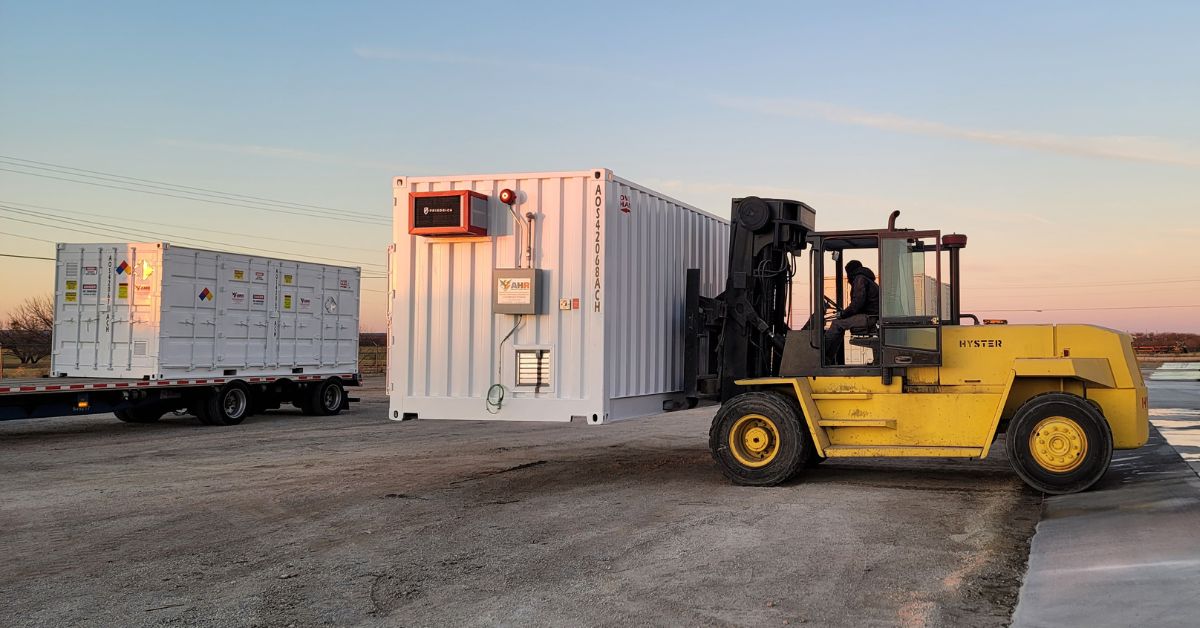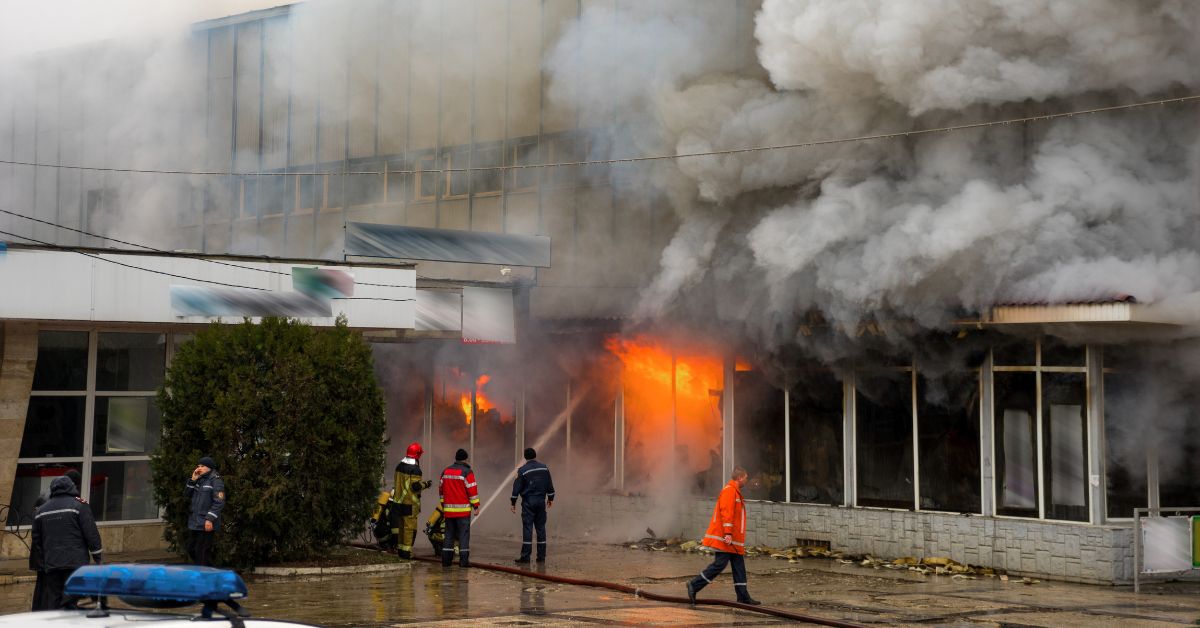
Disasters can strike at any time, posing significant risks to hazardous materials (hazmat) storage facilities. Safety managers must ensure their facilities store hazmat safely and securely to prevent environmental contamination and health hazards. Learn all about hazmat storage for disaster preparedness, including the impact of various disasters on storage centers and preventive measures to mitigate these risks.
Floods
Floodwaters can breach hazmat storage facilities, leading to hazardous material leaks or spills that can cause severe environmental contamination and health risks. Such incidents can also lead to costly cleanup operations and legal repercussions for companies.
To prevent flood-related breaches, elevate storage containers above flood-prone areas and implement waterproof seals on all storage units. Installing flood barriers can further protect against water intrusion, ensuring the integrity of hazardous material containers. These measures will help keep hazardous materials safe during flood events and reduce the risk of environmental contamination.
Earthquakes
Earthquakes pose a serious threat to hazmat storage facilities, as they can potentially dislodge containers, causing spills or leaks. Such incidents pose fire hazards and chemical exposure risks to both personnel and the environment. Areas prone to seismic activity require earthquake-resistant storage units.
Securing storage units with seismic restraints and using shock-absorbing materials can significantly reduce the risk of damage during an earthquake. Regular inspections for earthquake preparedness should include checking the integrity of seismic restraints, verifying the condition of shock-absorbing materials, inspecting anchoring systems, and assessing structural stability to ensure compliance with safety regulations and enhance disaster resilience.

Fires
Fires are some of the most common disasters that hazmat storage facilities must prepare for due to the high combustibility and reactivity of hazardous materials. Fires pose significant risks, including the potential for explosions, chemical reactions, and the release of toxic substances into the environment. Fires can also lead to severe property damage and environmental contamination, endangering the safety of personnel handling hazardous materials.
Organizations should implement strict fire prevention measures, such as regular inspections, proper storage practices, and adherence to safety regulations. Additionally, investing in fire detection and suppression systems specifically designed for hazmat environments can provide early warning and swift response capabilities to contain fires before they escalate.
Hazmat Fire Suppression Systems
Specialized agents used in hazmat fire suppression systems may include dry chemical agents, foam concentrates, or inert gases that are effective in extinguishing fires involving hazardous materials. Additionally, pre-action systems, deluge systems, and clean agent systems can provide rapid and targeted suppression to prevent the escalation of chemical reactions and the spread of contaminants.
Hurricanes and Cyclones
Hurricanes and cyclones bring high winds and storm surges that can damage hazmat storage structures, causing hazardous material spills and chemical mixing. These events can lead to environmental contamination, water pollution, and soil degradation, posing risks to both wildlife and human populations.
To enhance hazmat storage safety in hurricane-prone areas, reinforce storage buildings with wind-resistant materials, secure storage tanks and containers to prevent displacement during high winds, and establish proper drainage systems to mitigate flooding risks. Additionally, creating defensible space around storage facilities by clearing vegetation and debris can help reduce the likelihood of fire hazards during storms.
Tornadoes
Tornadoes can destroy storage facilities, scattering hazardous materials over a wide area and contaminating soil and water sources. Constructing tornado-resistant buildings and securing storage containers with straps or anchors can help mitigate these risks.
Emergency response protocols for tornadoes should include immediate evacuation procedures, activation of emergency response teams equipped with protective gear, and communication strategies to coordinate containment efforts effectively. Establishing designated evacuation routes, implementing regular drills to ensure swift response, and having backup power sources for essential operations enhance the efficiency of containment measures.
Container Wind Force Ratings
A wind force rating for a hazmat storage container indicates its ability to withstand specific wind speeds without structural failure or displacement. Hazmat side-open storage containers from American Hazmat Rentals have a 150mph wind force rating, assuring their resilience against tornado-force winds. This rating ensures that the hazmat storage container can better protect hazardous materials during tornadoes by minimizing the risk of damage, leaks, or releases that could lead to environmental contamination and health hazards.

Chemical Accidents and Explosions
Chemical accidents involve the unintended release of or exposure to hazardous substances due to incidents such as spills, leaks, fires, or explosions. These incidents can pose risks to human health, the environment, and property. Failure to adhere to safety regulations, inadequate maintenance of storage facilities, and human errors such as mishandling chemicals or improper loading procedures can also contribute to incidents resulting in accidents or explosions within hazmat containers.
Facilities can take the following steps to minimize the risk of chemical accidents in hazmat storage:
- Adhere strictly to safety regulations and guidelines for handling, storing, and transporting hazardous chemicals.
- Conduct regular maintenance checks on storage facilities, equipment, and containers to ensure they are in good condition and compliant with safety standards.
- Provide thorough training to personnel on proper handling procedures, emergency response protocols, and the use of personal protective equipment (PPE) when working with hazardous materials.
- Implement stringent inspection protocols to detect and address potential hazards, such as leaks, corrosion, or improper storage practices, before they escalate into accidents.
- Establish clear communication channels and reporting systems to promptly address any concerns, incidents, or near misses related to chemical handling.
Power Outages
Power outages can disrupt ventilation systems, temperature controls, and security measures, potentially leading to chemical releases, overheating, or unauthorized access. To mitigate the risks of power outages, businesses can install backup power generators as a reliable fail-safe measure to ensure continuous power supply during emergencies. These generators serve as a critical asset in maintaining essential operations, such as ventilation systems, alarms, and lighting, to prevent hazardous materials from becoming compromised. Implement regular maintenance schedules for these generators to guarantee their readiness.
Organizations can also integrate advanced monitoring systems that provide real-time data on environmental conditions within hazmat storage facilities. These monitoring systems can typically rely on backup power sources, such as generators, to ensure continuous operation during power outages. These systems can monitor temperature fluctuations, humidity levels, and potential leaks, enabling proactive identification of issues that could escalate during power outages.
Effective hazmat storage disaster preparedness requires a multifaceted approach involving physical safeguards, regulatory compliance, and thorough personnel training. Preventive measures like seismic restraints, wind-resistant materials, and fire barriers play a critical role in mitigating risks. Regular inspections and maintenance, coupled with real-time monitoring systems, ensure ongoing safety and preparedness. By adopting these strategies, businesses can minimize the adverse impacts of disasters on hazmat storage facilities and maintain a safer environment.